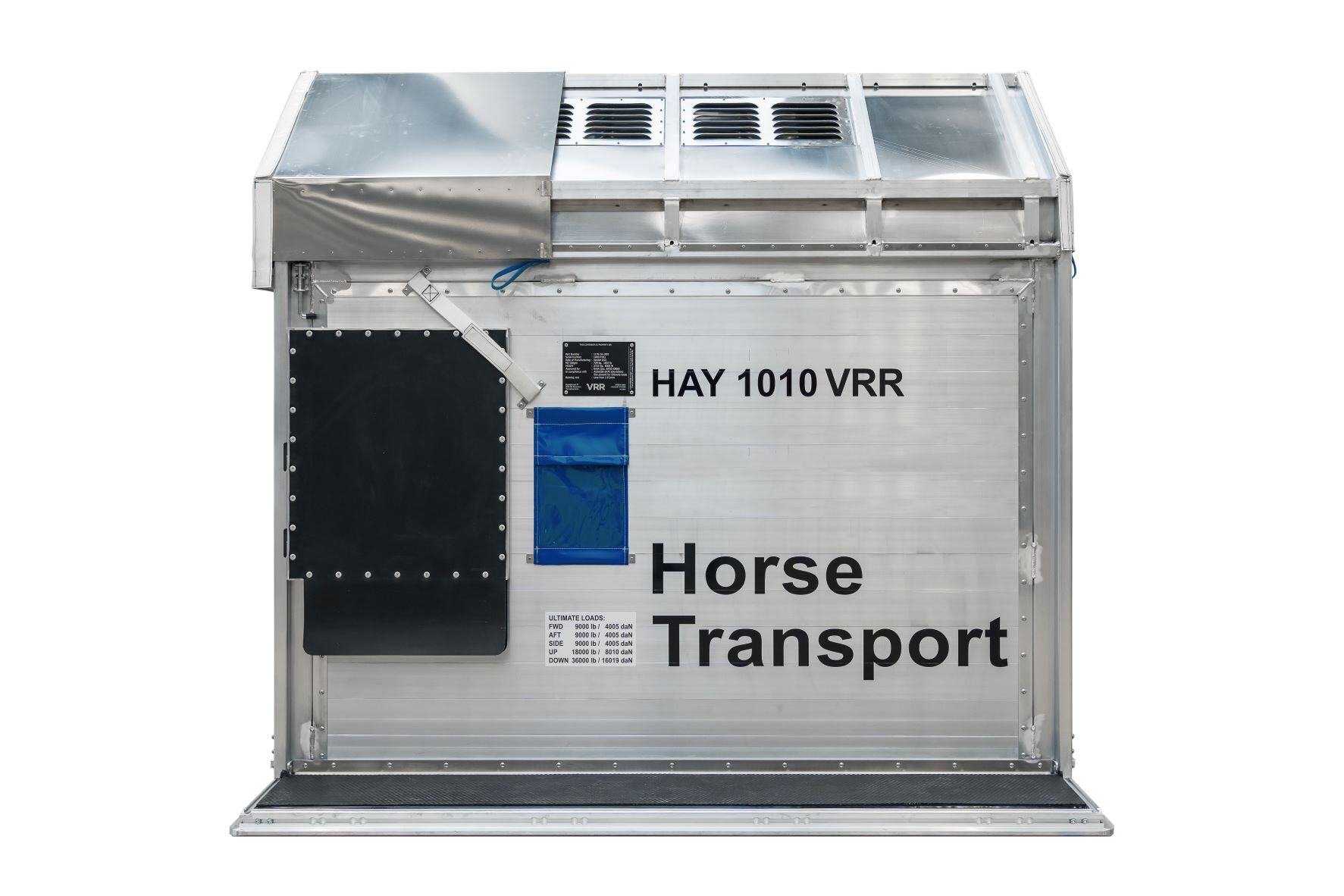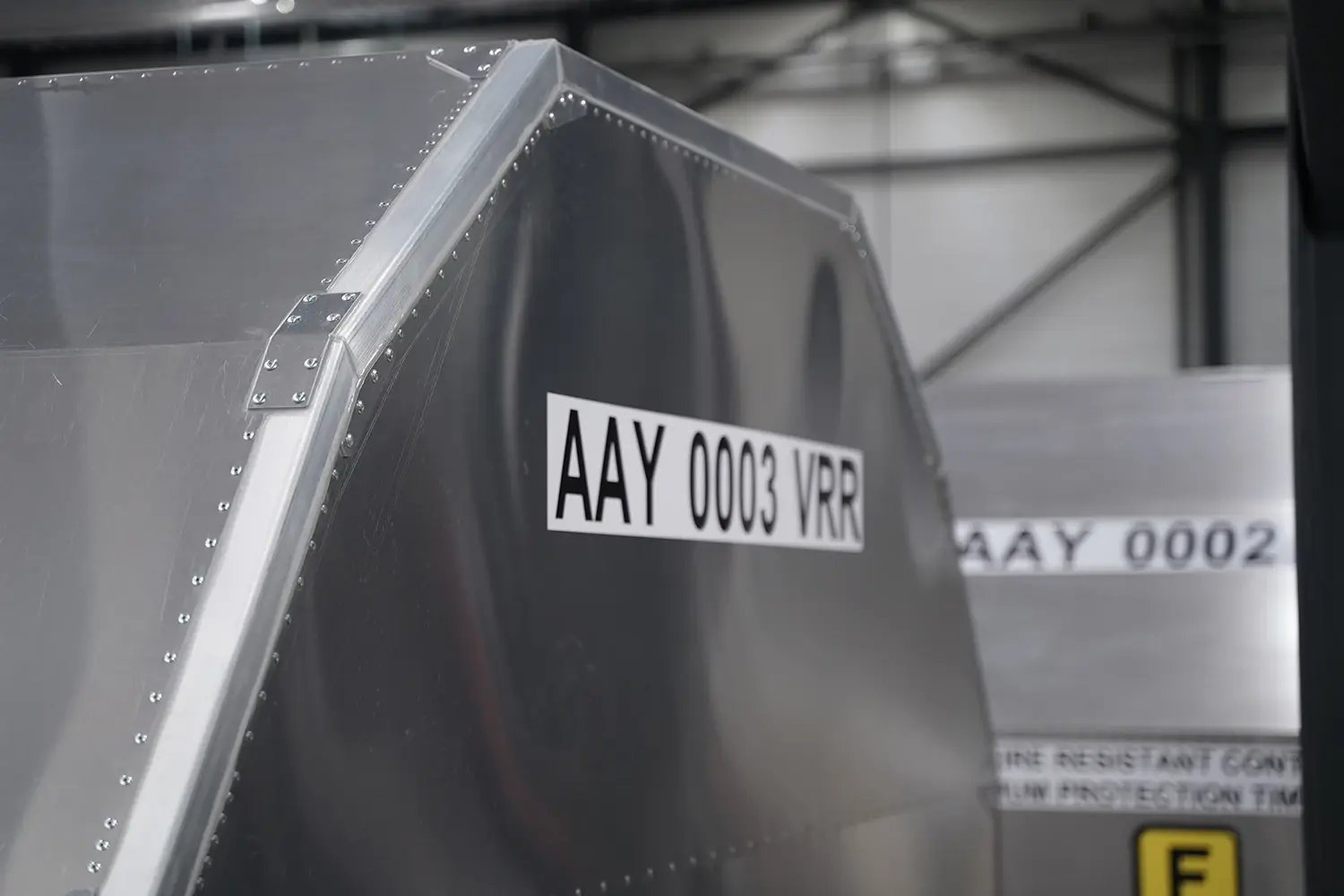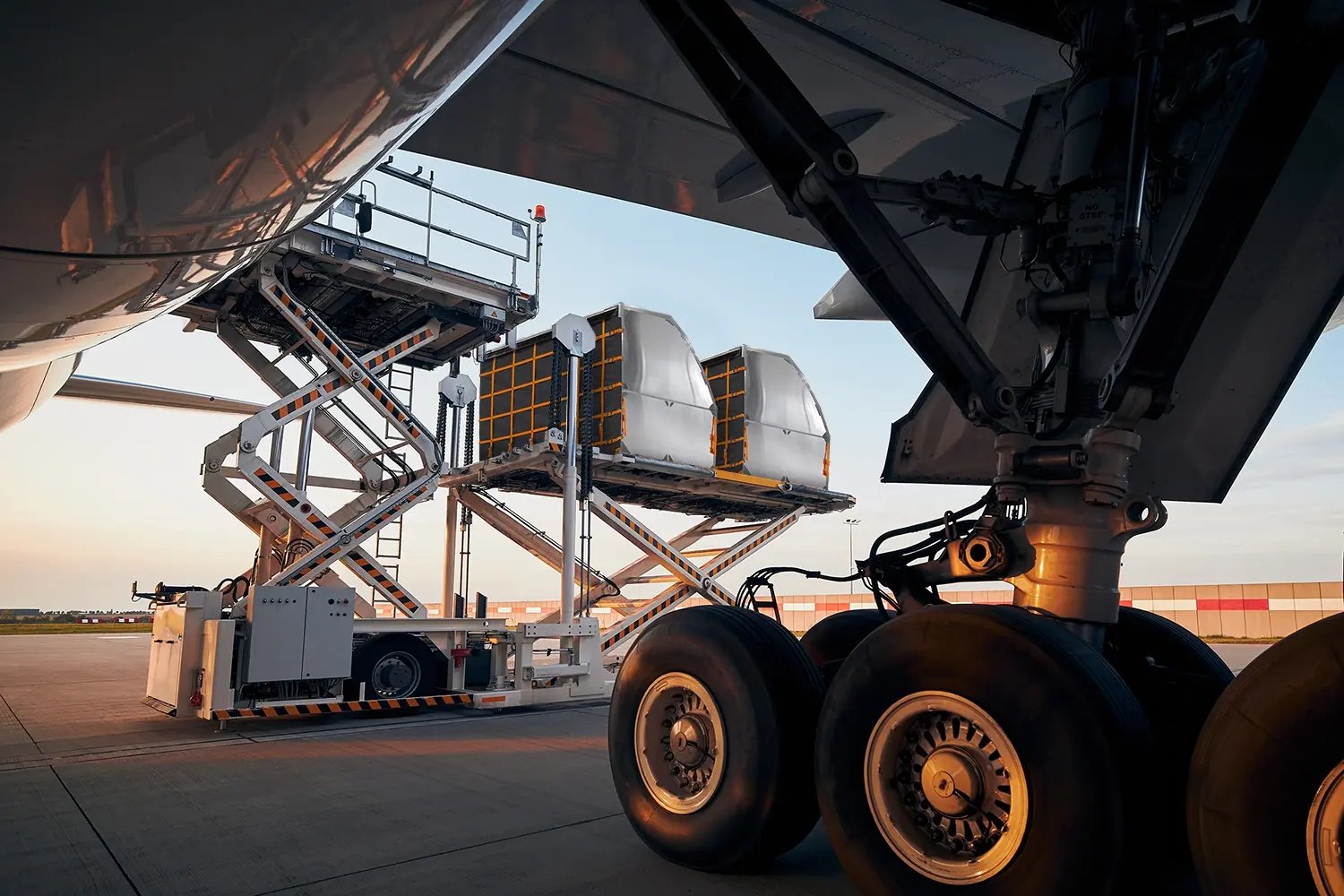Identifying a ULD
An extensive explanation of how the ULD-codes works.
Each Aircraft Unit Load Device (ULD) is identified by its ULD code. This code is a unique combination of letters and numbers, starting with a three-letter prefix that identifies the type of ULD. This prefix is followed by a unique 4 or 5-digit serial number to distinguish it from others of the same type. The last two or three characters designate the owner of the ULD (e.g. the airline).
Many different parties handle ULDs as they pass between airlines and airports around the world, so a system was needed to identify easily and quickly each ULD. Therefore, the International Air Transport Association (IATA) introduced a global standard system of identification. Accordingly, each ULD is assigned a unique ULD code, which is clearly visible on the relevant unit. By standardising the system, all manufacturers, cargo handlers and airlines can now identify the ULD’s classification and the owner at a glance.

The first three letters of a ULD code are perhaps the most important. They are used to identify the type, size and shape of the ULD. This information is vital in determining not only the type of cargo it can contain but also the aircraft it is compatible with.
The three-letter prefix works as follows:
- The first letter represents the type of ULD
- The second letter represents the base size of the ULD
- The third letter represents the container’s contour or the pallet’s restraint system
To prevent the ULDs moving around during flight and potentially damaging the aircraft, the plane has loading and restraint systems. These interface directly with a ULD, effectively locking the ULD into place so it becomes part of the aircraft.

The first letter of the code’s prefix describes the type of container:
A Certified aircraft container
B Certified winged aircraft pallet
D Non-certified aircraft container
F Non-certified aircraft pallet
G Non-certified aircraft pallet net
H Certified horse stalls
K Certified cattle stalls
L Certified multi-contour aircraft container
M Thermal non-certified aircraft container
N Certified aircraft pallet net
P Certified aircraft pallet
Q Certified fire resistant container
R Thermal certified aircraft container
V Certified ULD for automobile transport
W Certified ULD for aircraft engine transport
X Reserved for airline internal use
Y Reserved for airline internal use
Z Reserved for airline internal use
A 2235 x 3175 mm / 88 x 125 inch
B 2235 x 2743 mm / 88 x 108 inch
G 2438 x 6058 mm / 96 x 238.5 inch (20 ft)
K 1534 x 1562 mm / 60.4 x 61.5 inch
L 1534 x 3175 mm / 60.4 x 125 inch
M 2438 x 3175 mm / 96 x 125 inch
N 1562 x 2438 mm / 61.5 x 96 inch
P 1198 x 1534 mm / 47 x 60.4 inch
Q 1534 x 2438 mm / 60.4 x 96 inch
R 2438 x 4978 mm / 96 x 196 inch (16 ft)
S 1562 x 2235 mm / 61.5 x 88 inch
The third letter of the code’s prefix describes the container's contour (shaped to fit in the plane’s body) and, in the case of pallets and nets, the restraint system in which the unit is classified. The ULD contour is designed to maximise the cargo volume carried, and depends on its position in an aircraft (upper or lower deck).

Know what ULD you need?
Then come and meet our General Cargo Containers. The shapes and sizes may be standardised; the build is definitely not. Each certified ULD is designed with operational efficiency and aircraft compatibility in mind, offering you quick and easy loading access, maximum internal cargo volume, effective cargo protection and excellent durability.
.png)